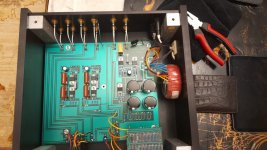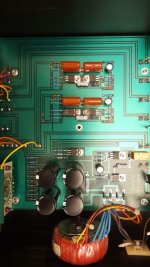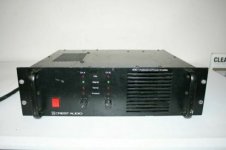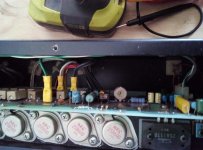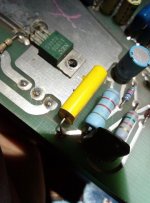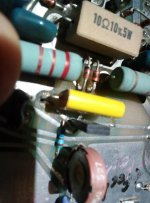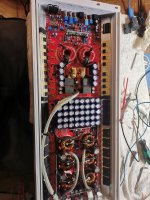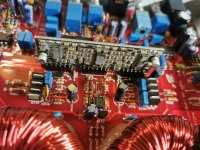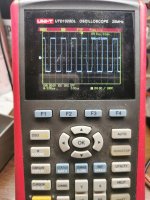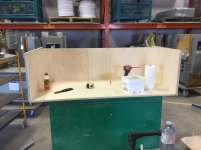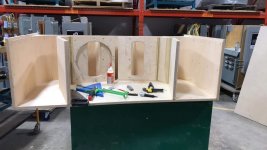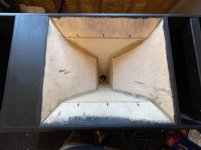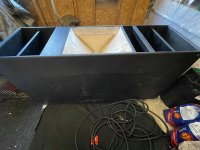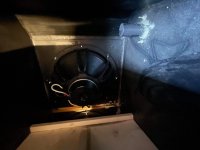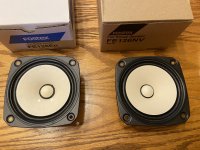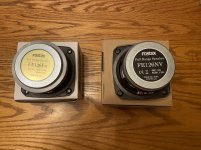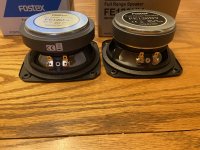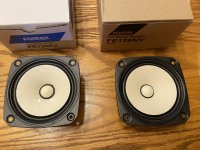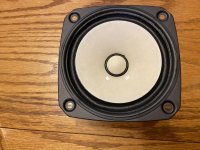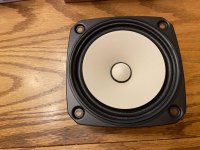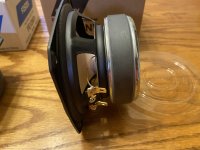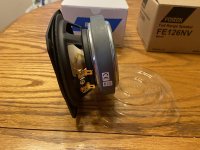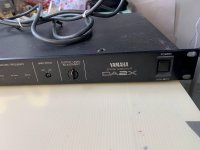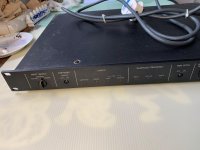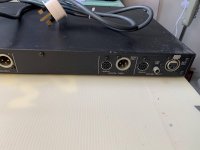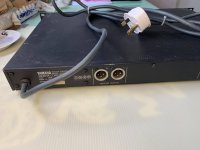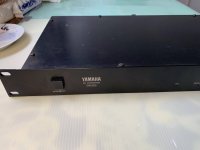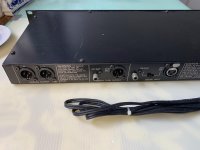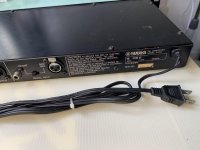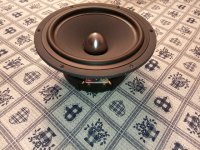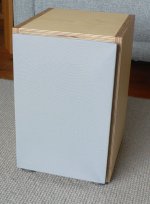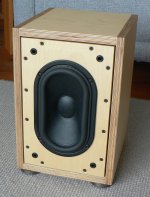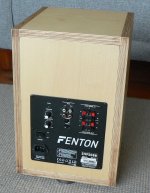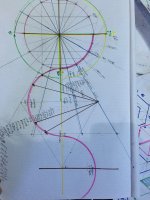Would love for some wiser & more experienced folks to chime in on this project, as I've been going back and forth on driver choices and design decisions as I wait for the SEOS 18 1.4" horns to arrive from Autotech, a slight roadblock at this stage.
This build is intended for moderate listening levels (hi-fi) 90% of the time but needs to be able to withstand PA level territory (115dBA-120dBA) as the multi-purpose space might host the occasional DJ set. A total of 4x 2-way cabinets in a 80ft x 25ft room with 2x Danley TH118 on sub duties.
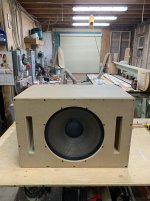
My two questions aim at finalizing design choices on a no compromise high-efficiency 2-way with a big (14 or 15"), low-mms woofer with great midrange & break-up behaviour + a 1.4" CD that is a great fit for the SEOS 18-1.4 and it's dispersion characteristics for an xo between around 650-950hz (more on this below)
-System is active (BLU 160, FIR filtered)
-2x Danley TH118 on sub duties
-cabinet volume limitation around 75L-100L (port layout based on Altec 9812)
I was originally set on using 4x JBL 2226H I have on hand (and for which I built a test cabinet with good results). But I had a bad surprise when I ran measurements on all 4x units: only 2x have original cones, the other two have been reconed with what appears to be aftermarket cones. Here is the test cabinet and FR/Impedance plots.
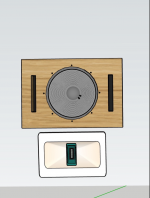
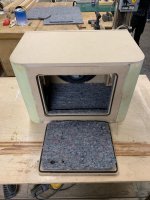
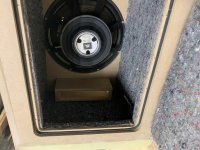
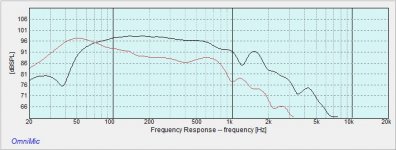
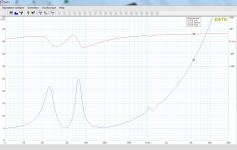
Since the JBL is old tech that clashed with the rest of the components anyway, I went back to the drawing board & set out on a search for modern 15s that fit the bill. But before committing to anything, I want to measure the SEOS 18 1.4. I'm basically hesitant to commit to other aspects of the build before I can fact-check my design decisions with measurements of the horn.
Tell me if I'm over-thinking it, but here's my reasoning:
Since the polar plot of the SEOS 18-1.4 is inexistant online and unavailable from Autotech, here is the plot of the SEOS 18, the closest relative to the SEOS 18-1.4 for which there are polars available. From my interpretation of the polar plot, it seems the dispersion is effectively closer to 70°h x 80°v between 650hz and 900hz?
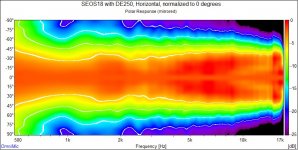
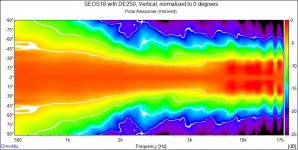
I'm concerned that my dispersion measurements of the SEOS 18 1.4 turn out to suggest a higher xo than what I originally had in mind based on the SEOS 18 plots above.
If the pattern control at 750hz is marginally better than in the SEOS 18, could it mean the dispersion no longer matches the 15's narrowing dispersion at 750hz, or would that be a negligible difference? Seems like I could be looking at an ideal xo point closer higher than originally planned.
Alternatively, would you consider this a good setup for the DCX 464, with a 500hz-650hz xo? This would mean I'd have to use the horn below it's pattern control cutoff. The consequences of this seem negligible vs. achieving a directivity match at the crossover point. Thoughts?
If there's a possibility to cross lower by using the DCX 464 instead, it would mean i'm no longer bound to using a mid woofer clean to 3khz and can be looking at more midbass oriented woofers. I'm also unsure of the consequences of crossing this low on that horn, aside from the pattern control loss. Anything else I might be overlooking?
Considering I don't need much output below 70hz from these cabinets as they will be used with 2x TH118s, would you stick with the initial plan that called for a woofer with good midrange performance well into 2Khz territory?
Do any of you see any issue with the reasoning of a capable mid woofer vs. more midbass oriented alternatives? I don't see much benefit from the latter when used with quality subs, aside from the ability to play louder for longer. B&C 15NDL76 can handle the occasional abuse from my experience. What about the Faital 15PR400? Xmech is rather low. It also seems to want a cabinet around 150L (like the Calpamos for instance) I'm wondering if that's as good a candidate as I'm hoping.
Here are my woofer options if ever some of you strongly favour one over another:
If horn dictates xo around 650hz to 900hz:
-Faital 15PR400 (wants more volume than 100L, any succesful builds in less volume?)
-18Sound 15MB1000 (hard to get)
-B&C 15NDL76
-B&C 14NDL76 (could 14" be wise? possibly a better dispersion match)
If xo can be lower (500hz to 650hz):
-Faital 15FH520
-B&C 15NW76
-B&C 14NDL88 (14"...)
Am I making a mistake discarding the DCX464 based on the 800hz cutoff of the horn?
What would be your preferred approach for the compromises presented above?
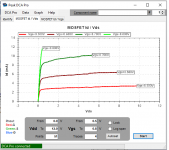
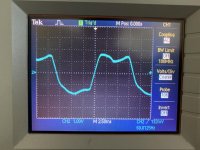
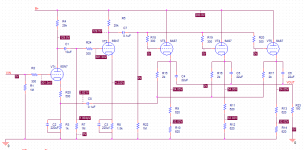
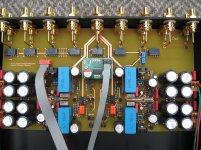
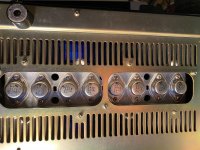
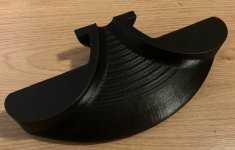

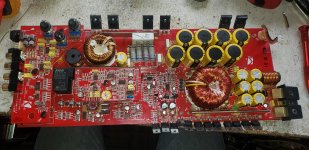
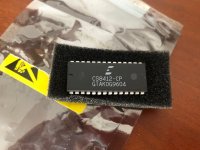











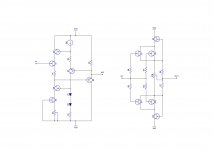
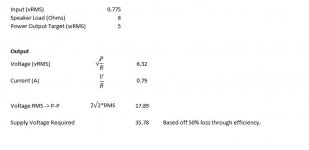
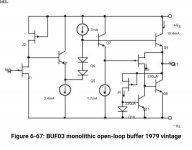
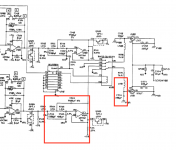
![IMG_0270[1].jpg IMG_0270[1].jpg](https://www.diyaudio.com/community/data/attachments/895/895137-aff91307d7182a9de5993ab4cc31f4ea.jpg?hash=r_kTB9cYKp)
![IMG_0273[1].jpg IMG_0273[1].jpg](https://www.diyaudio.com/community/data/attachments/895/895156-5397c109c36b79a1907f1b5ffe18520d.jpg?hash=U5fBCcNrea)
